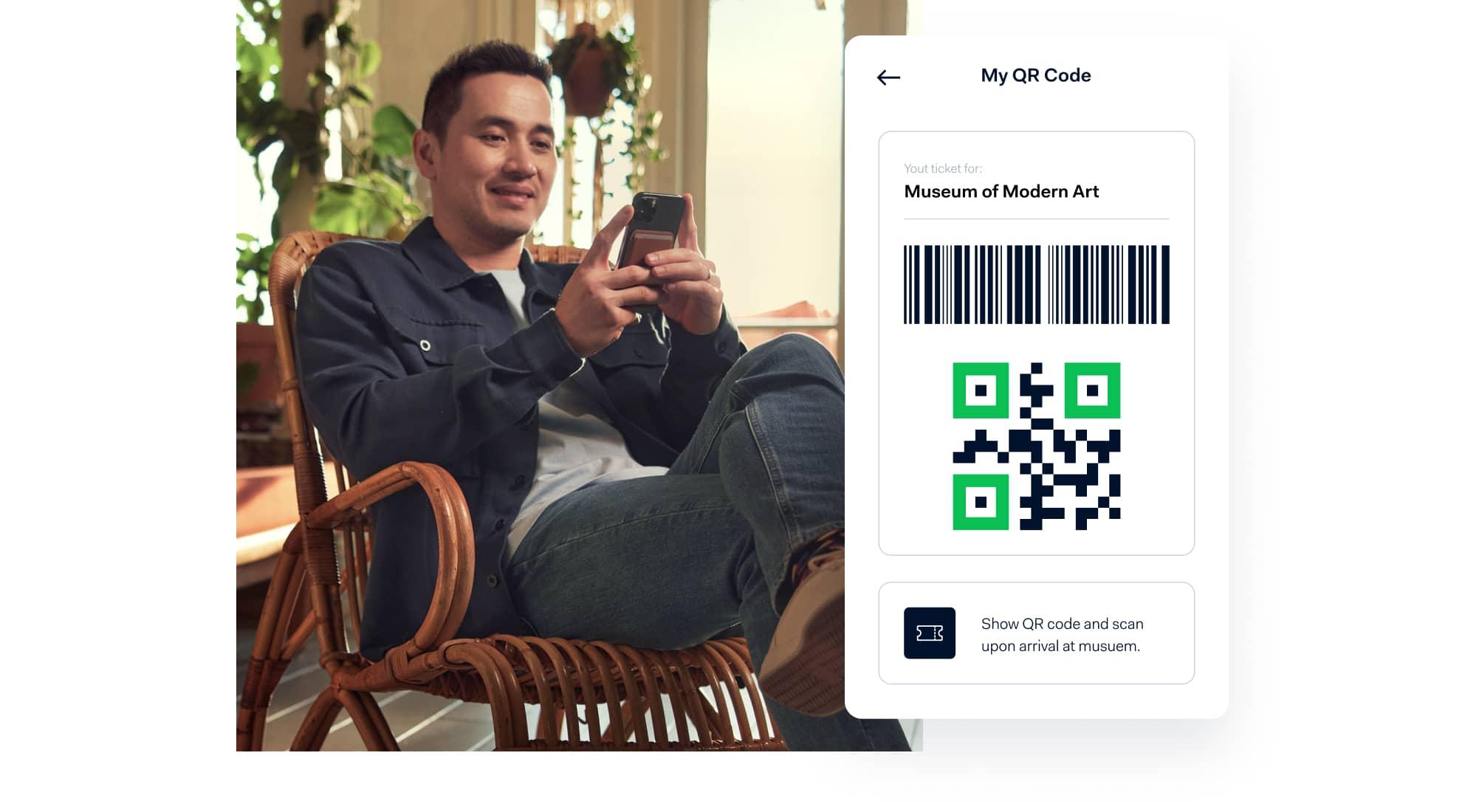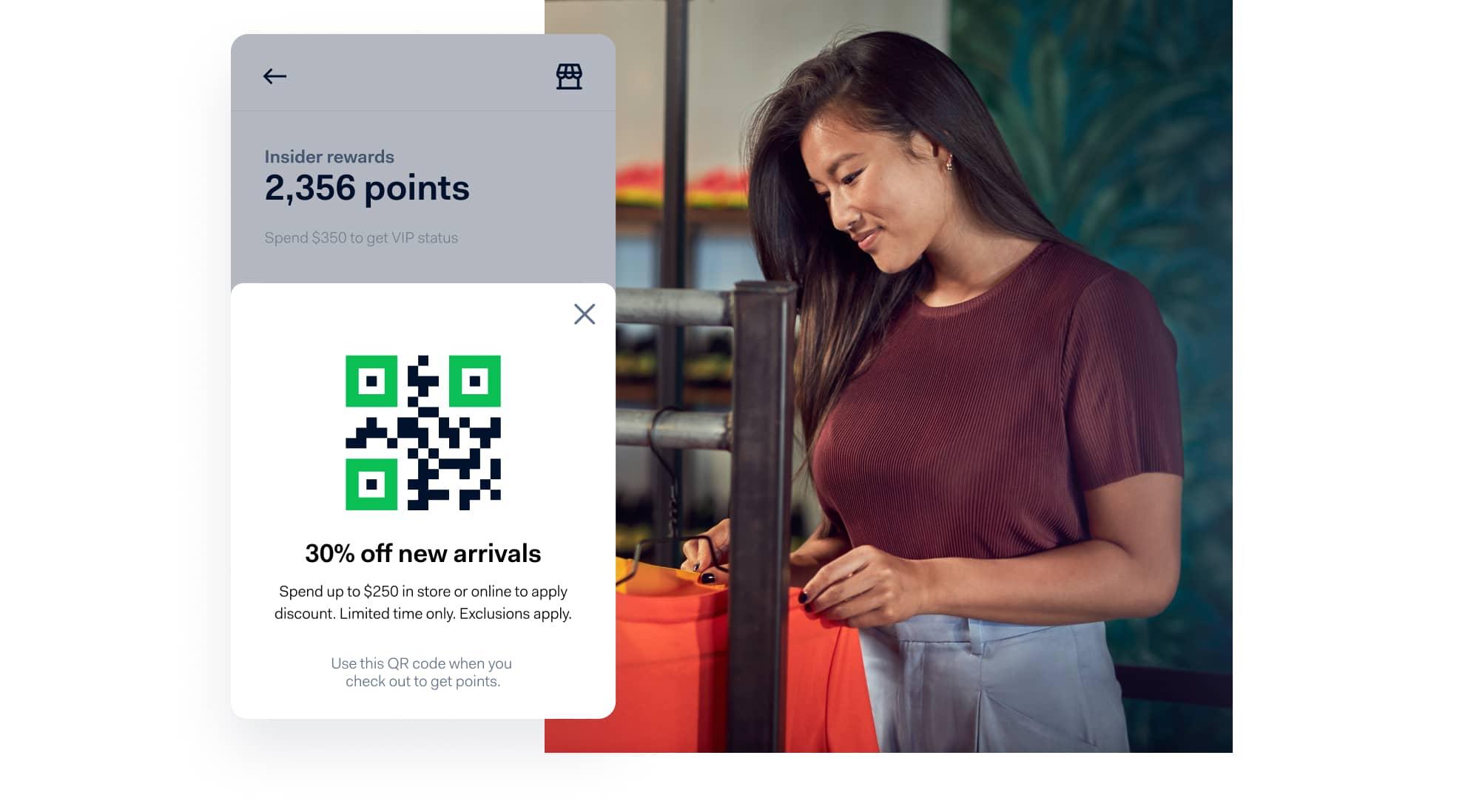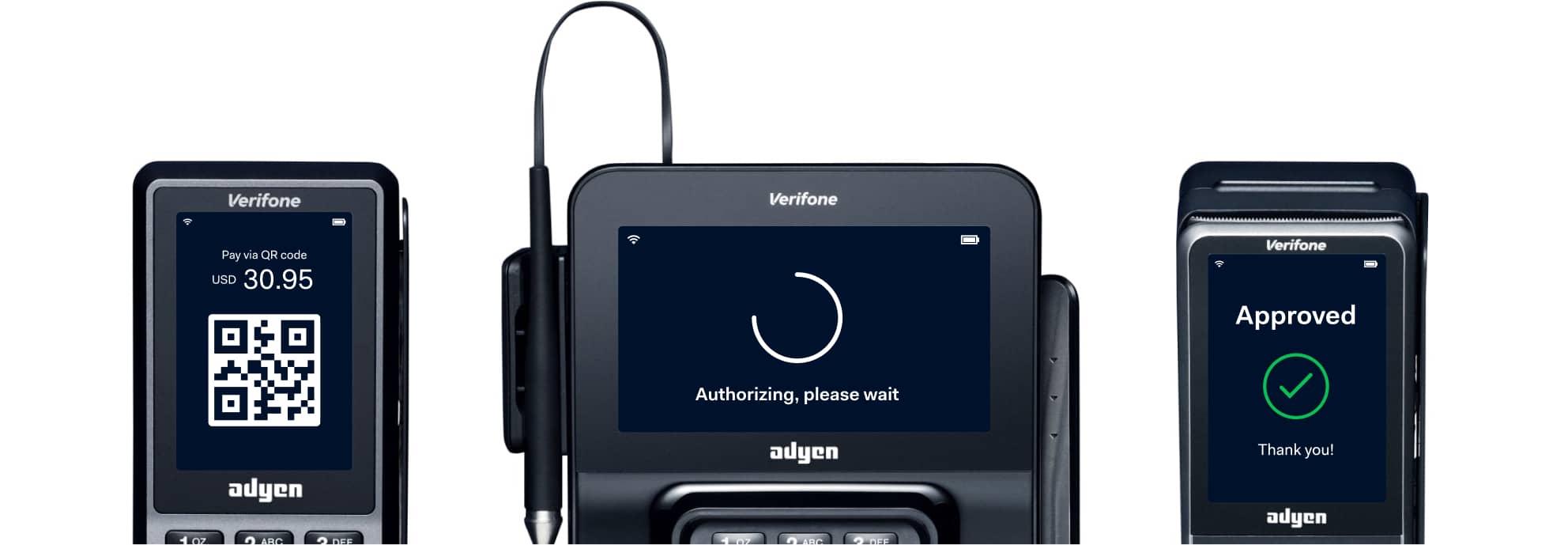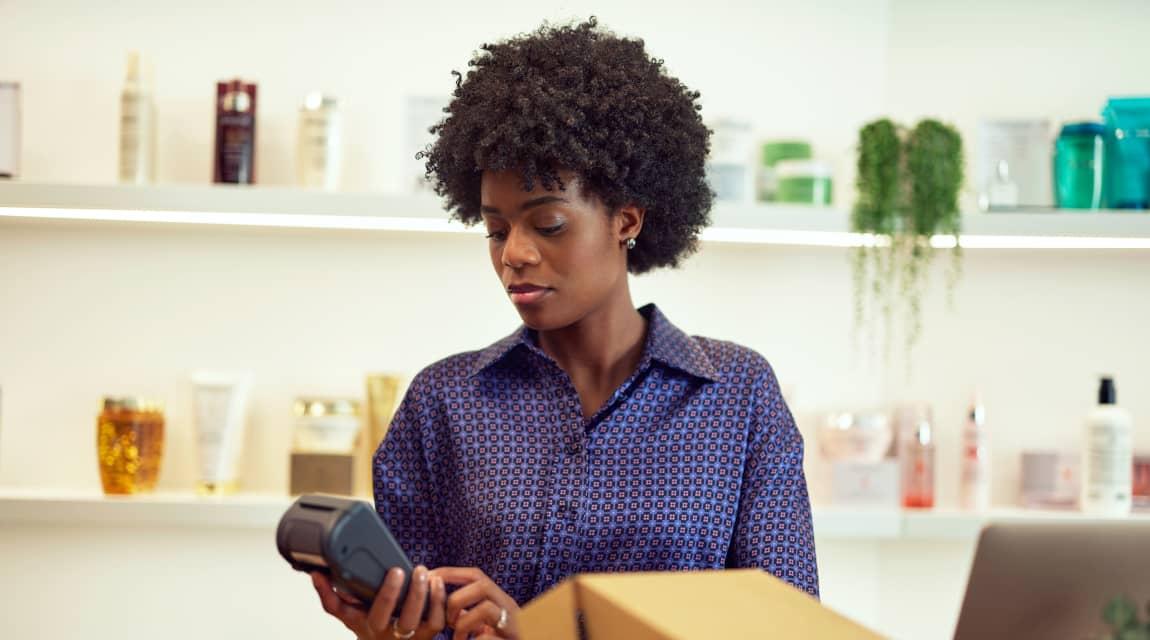Guides and reports
How QR code payments are changing the touch-free payments experience
Learn how to connect with customers and build better touch-free experiences across food and beverage, retail, and hospitality using QR code payments.

The humble QR code has emerged from 2020 as a versatile tool for delivering better customer experiences. At restaurants, especially, customers are loving this contactless tool to view menus, order, and pay with a snap of their smartphone.
Largely ignored in North America for years, COVID-19 has shown shoppers just how helpful QR codes can be. And now that many well-known food and beverage, hospitality, and retail brands are using QR codes to enable touchless experiences, these little matrix barcodes are popping up everywhere.

In fact, QR codes are quickly becoming the go-to link between our physical and digital worlds. Almost half of US shoppers (41%) say they’d like to see more stores let them pay in-store using an app (e.g. scan and pay). And almost one quarter (21%) say they don’t really use physical cards anymore, instead relying on their mobile device ordigital wallets(e.g. PayPal, Apple Pay, or Google Pay).
Good news is, brands like yours can easily give them what they want. Now that81%of Americans own a smartphone, eight out of ten people are carrying a QR code scanner in their pockets. Here’s how to connect with these customers and build better touch-free experiences.
A quick history of the quick response code
Invented by Japanese engineer Masahiro Hara in 1994, QR codes were used to track vehicles during manufacturing. But it wasn't until China's first self-service QR code reader debuted in 2014 that the QR code took off outside a factory.
Since then, payment methods using QR codes (like appsAlipayandWeChat Pay) have largely replaced cash and cards in China.

Across the world in North America, QR codes have been around for 10 years without really sticking. Blame it on a clunky UX that required a separate app to read them, but consumers found them hard to use (even after 2016, when smartphone cameras became built-in QR code readers).
Then 2020 and the COVID-19 pandemic happened. All of a sudden, consumer appetite for touch-free experiences went skyrocketing and people were open to using QR codes again as long as it meant they didn’t have to touch a menu, kiosk, or even a point of sale (POS) terminal.
“QR codes have been the main way consumers pay in countries like China for years. The pandemic has seen a huge increase in the use of QR codes across the board, because they enable consumers to use their own phone.”
As a result, many leading hospitality, food and beverage, and retail brands are using QR codes to give customers thetouch-free experiencesthey want. And because QR codes are a cost-effective way to solve multiple parts of the shopper journey, they’re accessible to more brands.
3 ways QR code payments make shoppers' lives better
With the overall contactless payment market expected to hit$4.68 trillionby 2027, andNorth America in particular singled out as a leading market for QR code-based transactions, the time has never been better for companies to incorporate QR codes into their payments strategy.

#1: Removing friction from the customer journey
Since anyone with a smartphone can use their camera to scan and pay (or scan and see a menu, scan and access a website, scan and visit your brand’s Instagram, etc.), QR codes put a whole world of immediacy within easy reach for your customers. That translates to less friction along the shopper journey, from discovery to consideration to purchase.

Take the Rijksmuseum in Amsterdam.QR codes were essentialto achieving their goal of going cashless in 2020 by enabling their visitors to purchase tickets via QR codes and pay with their favorite digital wallets. The result: Less physical proximity for visitors and staff, as well as shorter lines at ticketing and cafes.
With Adyen, you can use your company app to power payments intocashless commerce, without additional hardware at point of sale, including generating and accepting QR codes.

#2: Making loyalty programs a breeze
Aside from your most die hard fans, loyalty programs can be hard work for shoppers. If their details aren’t automatically linked to their loyalty rewards account, they have to remember to present their loyalty card or email at checkout when they make a qualifying purchase.
What if they immediately earned their points instead? No separate card or email required. Paying in your app via a QR code makes it that easy. Once customers see their rewards growing, they’ll feel appreciated and encouraged to spend more: Research shows companies with strong loyalty marketing programs grow revenues 2.5 times faster than their competitors.

As an added bonus, QR codes can also help decrease human error around things like coupons, discounts, and updates. A person might forget to say a promo or enter one at checkout, but with a QR code, you know it will be messaged and applied to their purchase.
It’s not just loyalty programs that can benefit from QR codes. You can also use them to provide an easy way to donate to your charity of choice for customers at checkout withAdyen Giving.

#3: Putting touch-free experiences within easy reach
For most shoppers, switching between physical and digital channels is just how they shop. And that’s increasingly becoming true for how they pay, too. When checking out at yourPOS terminal,they want to be able to use their favorite method, whether digital or not.

Employing QR codes in your checkout flows is an attainable way to bridge these two worlds and let your customers use online payment methods in-store. How you use QR codes really depends on your hardware, payments partner’s capabilities, and your business setup.
For example:
- A retailer displaying dynamic QR codes on their terminals to allow customers to scan with their smartphone, enabling purchases with alternative ecommerce methods such as direct banking or installment options.
- A hotel scanning a customer’s unique QR code at checkout, which the customer has linked to their credit card and is displayed in the brand’s app.
- A restaurant putting a QR code on tables that directs customers to their website, where they enter their table number and choose to pay with their preferred payment method.
With Adyen, you can bridge online and in-store withUnified Commerceto deliver a wealth of cross-channel experiences, simplify reconciliation, and capture rich customer insights.
How to get started with QR payments

Whether in person or via mobile app, QR codes are one of the easiest touch-free payment methods you can offer your customers today. Simple to implement and optimize, going from paper printout to digital display really comes down to choosing the right payments provider.
Merchants using Adyen and ourPay by Link solutionrest easy knowing we make core functionality like dynamic QR codes standard. And that adding new payment methods is as easy as flipping a switch, thanks to our unified solution.
To learn more about how we can help you with integrating QR code into your payments strategy,get in touch.
Adyen Retail Report
New consumer trends show how brand loyalty and customer experience will drive commerce for years to come.
Read now